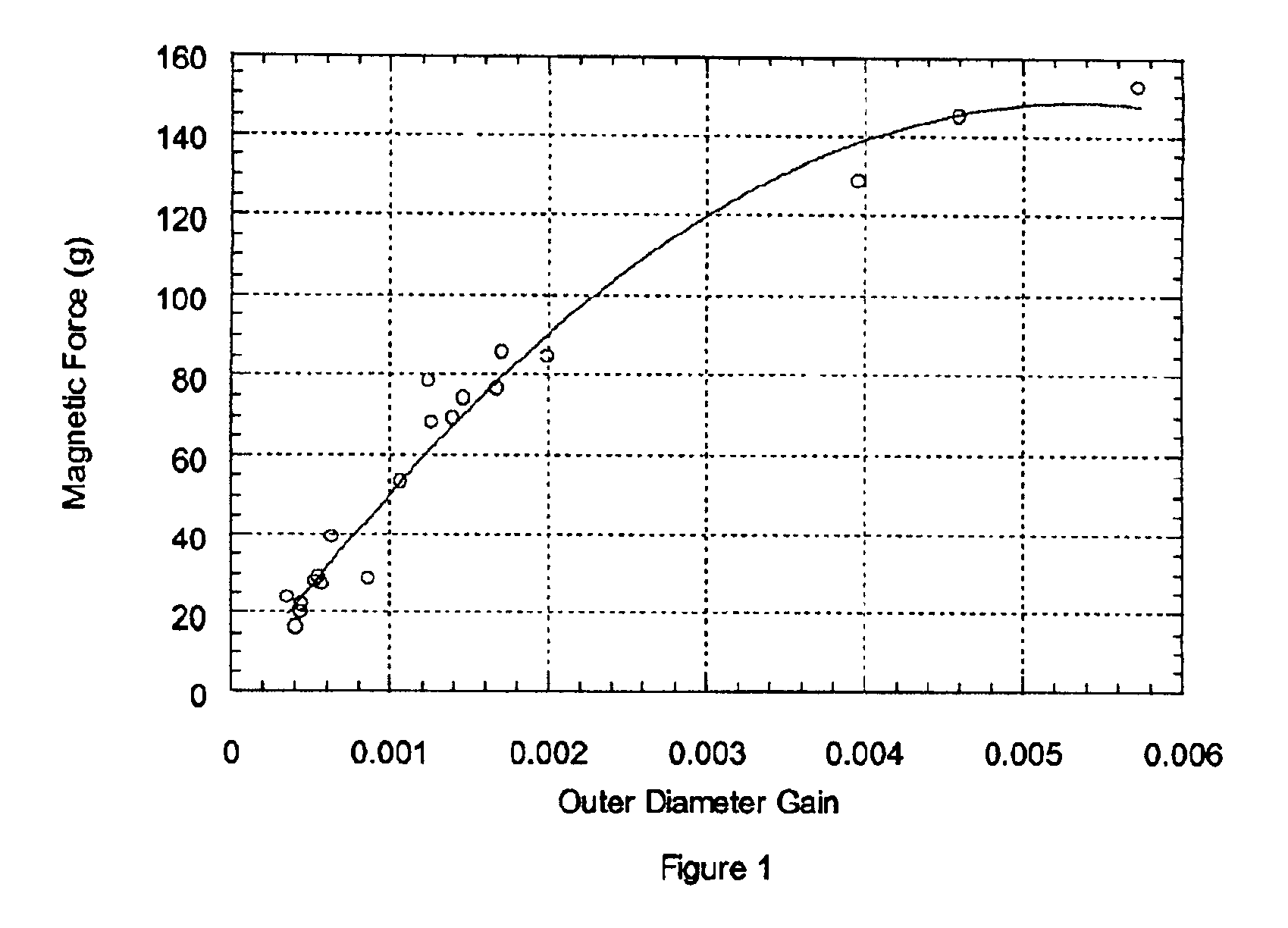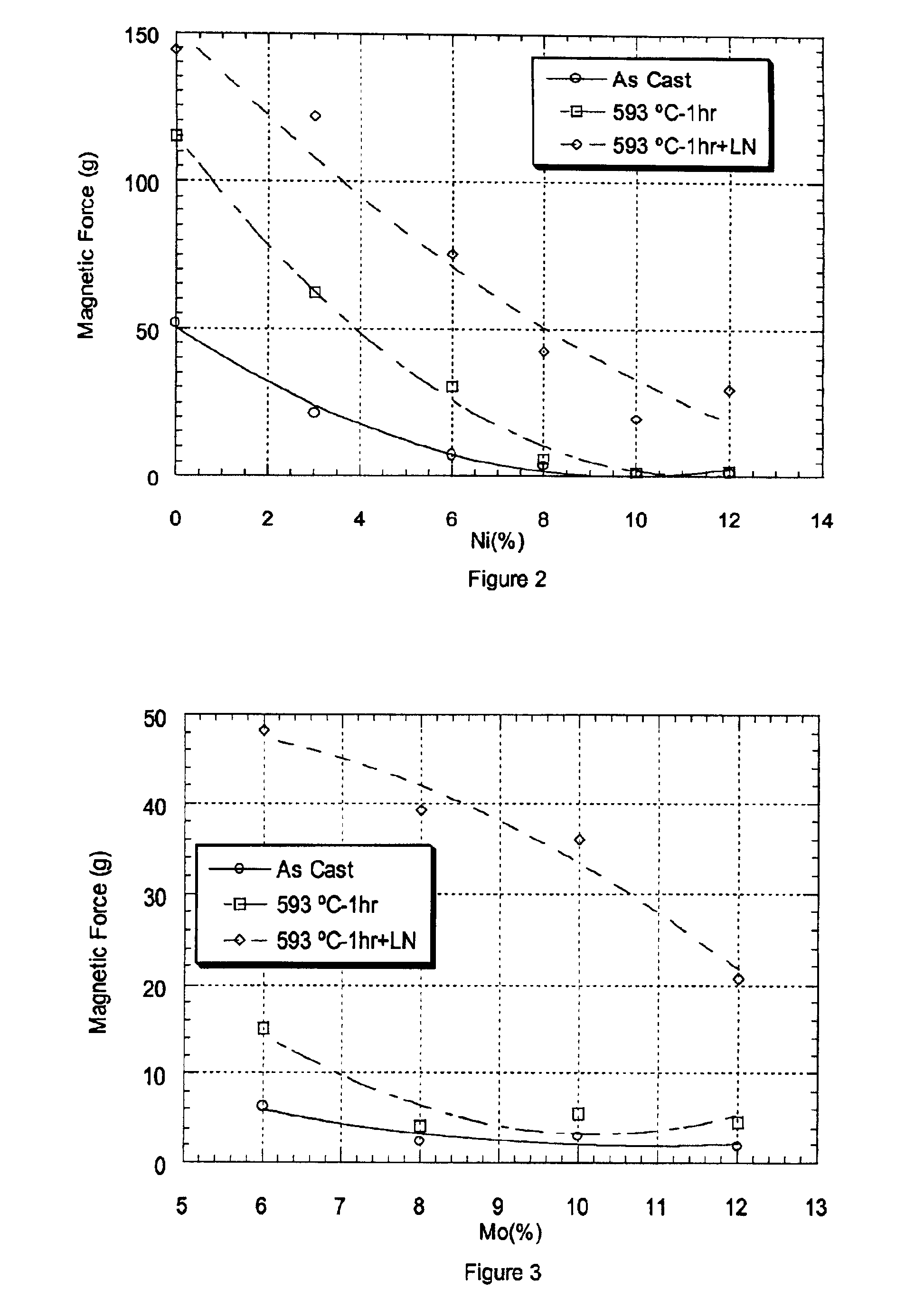Wear resistant alloy containing residual austenite for valve seat insert
a technology of residual austenite and valve seat insert, which is applied in the direction of piston rings, mechanical equipment, machines/engines, etc., can solve the problems of martensite decomposition, martensite decomposition, and small amount of residual austenite in the tool steel, so as to improve the hardness of inventive alloys, and improve the wear resistance and compatibility
- Summary
- Abstract
- Description
- Claims
- Application Information
AI Technical Summary
Benefits of technology
Problems solved by technology
Method used
Image
Examples
Embodiment Construction
[0023]The microstructure of most traditional VSI iron base alloys, like high speed steels and high chromium type alloys, consists of hard alloy carbides and tempered martensite matrix to achieve good wear resistance. The tempered martensite is also strengthened by solution atoms like tungsten, molybdenum and chromium, and the like. The tool steel type alloy design principle has been proved to be effective to obtain high wear resistance in different cutting tools where high hot hardness is essential to retain a sharp edge in high temperature during cutting operation. Wear of intake VSI is the accumulated effects of high normal contact and shear stresses after multiple open and close cycles under high frequency. The typical average intake VSI working temperature is only around 200-300° C., not high enough to form protective oxides when engines are running very clean. Subsurface crack formation and propagation are one of the major mechanisms for the loss of intake VSI material. Alloys ...
PUM
| Property | Measurement | Unit |
|---|---|---|
| Temperature | aaaaa | aaaaa |
| Time | aaaaa | aaaaa |
| Percent by mass | aaaaa | aaaaa |
Abstract
Description
Claims
Application Information
 Login to View More
Login to View More - R&D
- Intellectual Property
- Life Sciences
- Materials
- Tech Scout
- Unparalleled Data Quality
- Higher Quality Content
- 60% Fewer Hallucinations
Browse by: Latest US Patents, China's latest patents, Technical Efficacy Thesaurus, Application Domain, Technology Topic, Popular Technical Reports.
© 2025 PatSnap. All rights reserved.Legal|Privacy policy|Modern Slavery Act Transparency Statement|Sitemap|About US| Contact US: help@patsnap.com



